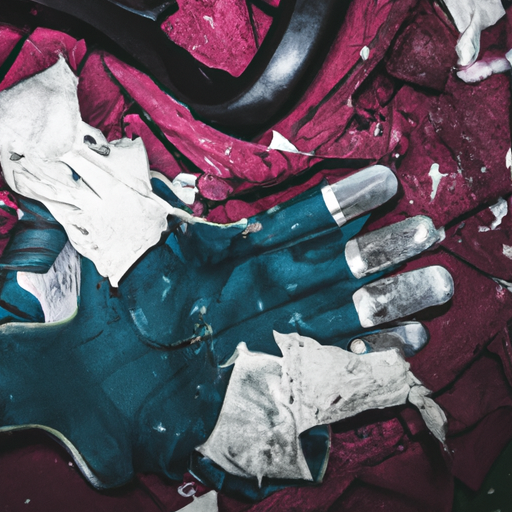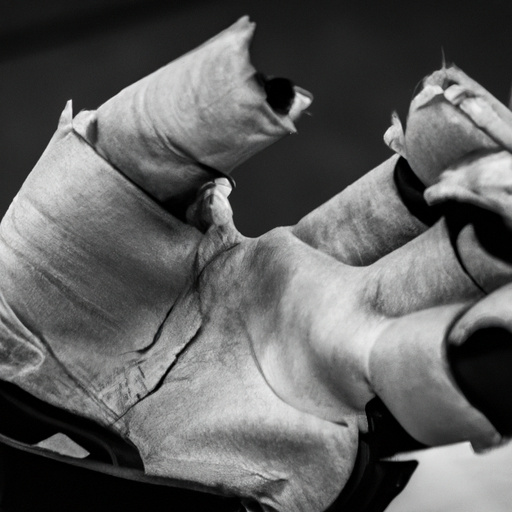In a recent episode of “On the Clock with Frank and Zack,” the hosts discuss one of the most cringe-worthy topics for any gym-goer: gym injuries. With no time to think, they share their experiences witnessing torn pecs, mangled hands, and other horrifying accidents. As they delve into the topic, viewers are encouraged to share their own stories in the comments section, creating a sense of community and shared experiences. So, gather around as Frank and Zack recount some of the worst gym injuries they’ve seen, and prepare to wince in sympathetic pain.
The Worst Gym Injuries We’ve Witnessed: Torn Pecs, Mangled Hands, and More

Torn Pecs
One of the most painful and debilitating injuries that can occur in the gym is a torn pectoral muscle, or pec. This injury often happens when lifting heavy weights or performing exercises that put excessive strain on the chest muscles. A torn pec can cause severe pain, bruising, swelling, and difficulty moving the affected arm. In some cases, surgery may be required to repair the torn muscle. It is important to always use proper form and technique when performing chest exercises to prevent this type of injury.
Mangled Hands
Another common gym injury is mangled hands, which can occur when using improper grip or lifting heavy weights without proper hand protection. This type of injury often leads to torn calluses, blisters, or even more serious issues such as sprained or broken fingers. In order to prevent mangled hands, it is important to always use lifting gloves or straps for added grip and protection. Additionally, using proper hand care techniques such as moisturizing and filing calluses can help prevent them from tearing.
Dislocated Shoulders
The shoulder joint is one of the most mobile joints in the body, making it susceptible to dislocations. Dislocating your shoulder can be extremely painful and can cause swelling, limited mobility, and instability in the joint. This type of injury often occurs during exercises that involve overhead movements or heavy lifting. To prevent dislocated shoulders, it is important to strengthen the rotator cuff muscles and practice proper form and technique when performing shoulder exercises.
Broken Bones
Although less common than other injuries, broken bones can still occur in the gym, especially when lifting heavy weights or performing high-impact exercises. Broken bones can be extremely painful and may require surgery or immobilization to heal properly. It is important to always use proper form and technique when lifting weights and to avoid overloading the muscles and joints.

Concussions
Concussions can occur in the gym when performing exercises or activities that involve high impact or the risk of falling. This type of injury can result in symptoms such as headache, dizziness, confusion, and memory loss. If you suspect you have a concussion, it is important to seek medical attention and allow your brain to rest and heal properly before returning to physical activity. Wearing protective gear, such as helmets, can help reduce the risk of concussions.
Sprained Ankles
Sprained ankles are a common gym injury that can occur when landing improperly from a jump or twisting the ankle while performing exercises such as lunges or running. This type of injury can cause pain, swelling, and difficulty walking. To prevent sprained ankles, it is important to wear proper footwear with good ankle support and to perform exercises on stable surfaces.
Torn ACLs
The anterior cruciate ligament (ACL) is one of the major ligaments in the knee and can be easily torn during high-impact activities or sudden changes in direction. A torn ACL can cause severe pain, swelling, and instability in the knee joint. Treatment for a torn ACL often requires surgery and extensive rehabilitation. It is important to use proper form and technique when performing exercises that involve jumping, pivoting, or quick changes in direction to prevent this type of injury.
Herniated Discs
Herniated discs can occur in the gym when performing exercises that put stress and strain on the spine, such as heavy lifting or improper form during weightlifting. A herniated disc can cause intense back pain, numbness or tingling in the limbs, and weakness in the affected area. Treatment for a herniated disc may involve rest, physical therapy, or in severe cases, surgery. To prevent this type of injury, it is important to use proper lifting techniques and to avoid excessive strain on the spine.
Muscle Tears
Muscle tears can occur in the gym when performing exercises that involve rapid and forceful movements, such as sprinting or heavy lifting. A muscle tear can cause pain, swelling, bruising, and a loss of strength in the affected muscle. Depending on the severity of the tear, treatment may involve rest, ice, compression, elevation (RICE), and physical therapy. It is important to warm up properly before workouts and to gradually increase the intensity of exercises to prevent muscle tears.
Heat Exhaustion
Heat exhaustion can occur in the gym when exercising in hot and humid environments without proper hydration and cooling measures. Symptoms of heat exhaustion include dizziness, nausea, headache, and profuse sweating. It is important to stay hydrated, take regular breaks, and exercise in well-ventilated areas to prevent heat exhaustion. If symptoms occur, it is important to rest, cool down, and rehydrate.
Dehydration
Dehydration can occur in the gym when exercising without drinking enough fluids to replace what is lost through sweat. Even mild dehydration can cause fatigue, dizziness, and muscle cramps. To prevent dehydration, it is important to drink water before, during, and after workouts. It is also recommended to avoid excessive caffeine and alcohol consumption, as these can contribute to dehydration.
In conclusion, the gym can be a great place to improve your physical fitness and overall health, but it is important to be aware of the potential risks and take steps to prevent injuries. By using proper form and technique, wearing appropriate protective gear, and listening to your body’s limits, you can minimize the risk of experiencing the worst gym injuries. Stay safe, stay hydrated, and enjoy your workouts!